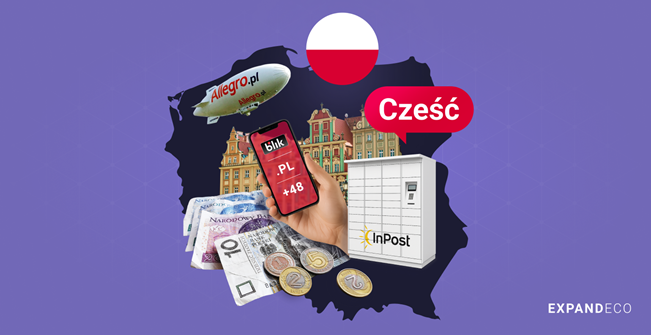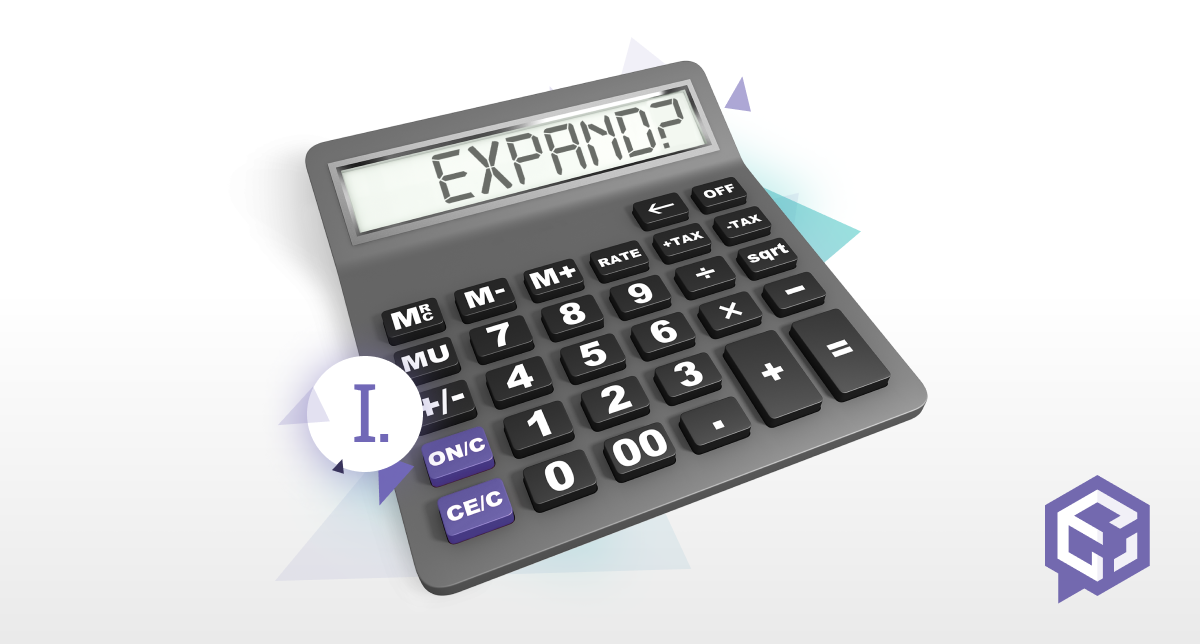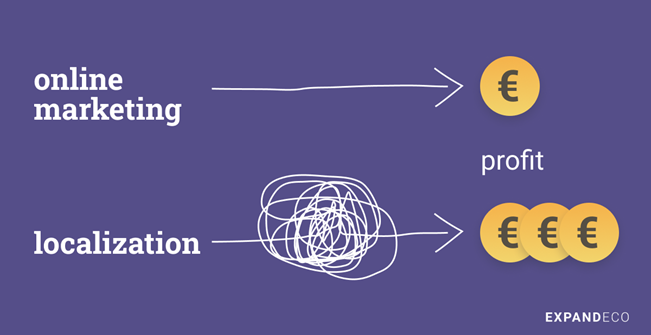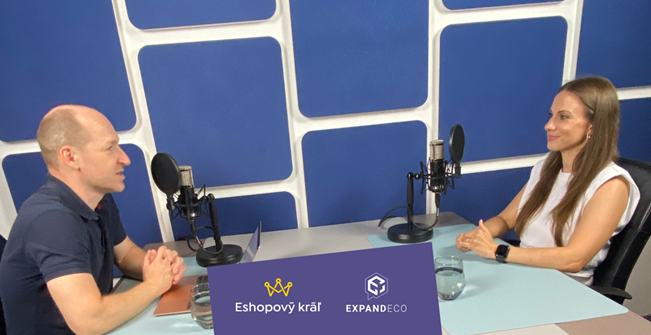
Market Analysis, Website and Other One-Off Costs
Proper Market Research: Do It Yourself or Outsource It?
Costs:
- With a specialized agency you will pay EUR 500-2,000/country. The result is a customized, in-depth analysis from which professionals filter out the irrelevant and, thanks to their preparation, you'll understand the data like a local business.
- On your own, count on 5-10 founder hours to get a basic overview of the country. Count on multiple costs to analyse multiple countries and choose the most suitable one.
Free tools:
- Market Finder, Google Trends, Public Data Explorer, Global Web Index (GWI)
Our TIP: In addition to the numbers, consider the entire ecosystem: Are you close to the country? Are family members native speakers? Have you lived there? Does your logistics partner cover the country? Under what conditions?
When you choose an agency, you understand the country as if you were a local.
The first costs you will incur in connection with expansion are related to market analysis. You will either choose to work with a market research agency, do your own research, or a combination of the two. The seriousness with which you want to enter the market will guide you in deciding which path to take.


The agency will give you the data in context so you understand it like a local business. It can add value to information that would be lost in generic data, yet is crucial for a specific client.
Some brands can afford to be agile and are better off that way, while others need to know all the variables and prepare seriously. “A local agency with local contacts can read data with understanding and in context. It's one thing to find raw data on the internet about Hungary, for example, and try to piece it together according to how we are used to things working on the Slovak market. The agency will give you the data in context so you understand it like a local business. It can add value to information that would be lost in generic data, yet is crucial for a specific client. “At Expandeco for example, we work with data that is not publicly available or we can mine it just by being local,” summarizes Tomáš Vrtík, the head of Expandeco.
The cost of a single country analysis ranges from 500 to 2,000 euros. What’s important in term of price range? It is a confluence of factors ranging from the prestige and brand of the agency to the methods and tools it uses. Client expectations also play a major role. “At Expandeco we are able to offer a base that is at the lower end of the range, and then it depends on what the online shop needs. Whether it's a look at the market, the segment and customer behaviour, or if he/she wants to do mystery shopping at competitors, to know their marketing costs, channels that work, etc.,” explains Tomáš.
Clever research on your own efforts + list of tools
You can also research the market internally. This is primarily a time investment; you can fit in ten hours for one country, however expect to spend several times more when comparing markets and searching for options.


The amount of the cost is directly proportional to the seriousness with which you want to enter the market.
When to choose your own research? “The amount of the cost is directly proportional to the seriousness with which you want to enter the market. It depends on the particular online shop owner and his/her expectations. Sometimes a company's needs require an in-depth analysis, other times we use freely available reports and tools on the Internet to help us. Founders often prefer the happy medium: one to two intensive consultations, when they have everything they need poured into their heads. You will learn 90% of the essential information and significantly reduce the time spent googling,” adds Tomáš Vrtík.
The most popular tools include Market Finder. It translates keywords and verticals across languages and ranks countries for expansion by potential. The tool takes search traffic, competitors and cost per click into account. In addition to the size of the opportunity, it shows how expensive and difficult it will be to enter the market. In the first step, you enter the URL of your (Slovak) website into the tool. The first results usually show the most lucrative markets in the world, which are the same for most Slovak online shops: USA, UK and Germany. Martin Svoboda, Industry Manager for Startups and Exports at Google, recommends manually editing categories and verticalsto let Market Finder suggest you really the most interesting markets for expansion. Click on an individual country to find information in greater detail, and the statistics from the search will tell you more about existing market demand and competitor activity. You will learn how to make yourself known and how challenging the logistics is.
The moment you choose a market to expand into, Martin recommends that you proceed with a competitive analysis: “For each of your competitors, prepare a basic overview, then set up a mirror and assess what your strengths and weaknesses are in the context of the market, what opportunities to seize and what to watch out for.”
Purchasing behaviour will be evaluated by the free version of Global Web Index. Get clarity on keyword searches in your segment with the Google Trends and Google Ads Keyword Planner. For the selected keywords, it shows the number of searches, the competition and the recommended advertising price.
If you sell commodity goods, you can use Heuréka's data sets. At the same time, you can read valuable information from local price comparison engines in those markets. Tomáš Vrtík advises: “For example, type in iPhone 12 and click through all the online shops on the list. You'll find out average prices, shipping rates, popular shipping methods and other nuances about both the market and your segment,” adds Expandeco's CEO. A hugely valuable resource, in his experience, are other members of the e-commerce community who have already expanded into the country, as well as podcasts and webinars.
How to choose the right country?
Don't underestimate your market choice. Even though the Slovak e-commerce community is heading to some countries in a big way because e-commerce is growing there (which can be practically said about the whole world now), it doesn't automatically mean a match for you. It's fair to assume that it can be. And it will be even fairer to verify the assumption.
How do you know where you have a realistic chance of success? Tomáš from Expandeco has a simple formula: mine the market data, but MOST importantly, pragmatically evaluate and make full use of the entire ecosystem, from suppliers to the spouse. Let's take an example: “You get one side of the equation by analysing the market and the data you get from Google, Heuréka, local price comparison engine, competitor analysis and your own product portfolio. If we just look at the numbers, we would probably all come to the same conclusion: the most promising market for all online shops is large markets like the US or Germany.” According to the Expandeco team, which has already helped as much as 150 online shops succeed in foreign markets, you need to have an equally strong foothold in the entire ecosystem. “We have proven time and time again that when founders have family members from a given market, or travel there frequently, they capitalize heavily on that when expanding.”
Model example: Austria or Hungary?
Let's say you want to expand into Austria, which is a lucrative but very difficult market. Good purchasing power is little argument in preference to Hungary, for example. In Hungary, there is an ecosystem ready for Czechs and Slovaks: support coverage, logistics, competition is not so advanced, Hungarians are used to buying abroad. These are all indicators that favour Hungary over Austria. But when you live half in Bratislava and half in Vienna because that's where your wife is from or you studied there and stayed there - that's a strong reason to be active in Austria. You have perceived this market, you have language skills and lower costs (family and friends will help).
You may also find that it makes the most sense to expand to Croatia because you go there all the time and have friends and a base there. Or you are from Těšín or Opava and you are more ready to successfully expand to Poland.

Web Platform: Customised or Template?
Costs:
- The development of a customised system requires an investment in higher amounts, in the thousands of euros. “When expanding into Hungary, EUR 10,000 - 30,000 is nothing unusual. On the other hand, in one step you prepare the technological subsoil for the next 5-10 years of expansion.” Tomáš Vrtík, Expandeco
- Template solutions range from tens to hundreds of euros. Online shop platforms for Hungary are usually pre-prepared by the providers and connected to local payment gateways and price comparison engines. Launching language versions is quite fast.
When deciding which way to go in terms of a web solution, it matters less what backend you use now and it is much more about your business plans in the years to come:
- Are you scaling, growing big, looking to expand into 10 states in the next 5 years?
- Or are you interested in one particular market or grouping of countries?
- What budget can you allocate for a web solution?
Most online shops choose both: a template for rent and then their own CMS
In general, if you want to expand in an agile way and test the potential of the market, a template, i.e. a platform like Shoptet, Magento, Shopify, etc., will give you a quick start. Their rent ranges from tens to hundreds of thousands of euros per year. “The moment you've reached a certain size, gone through a certain turnover, reached a serious technology limit or want full control of your data, it's time to develop custom solutions,” marketing manager of BabyNábytek.cz, Petr Schwarz, describes the experience of expansion. Although a template is initially a powerhouse when you can launch an online shop virtually the same day, it can also become extremely limiting to impossible to grow very quickly. “A chapter in itself is a connection to the ERP system - localised invoices, system emails, etc. Another limitation is the ability to translate the online shop into individual languages. The template will allow x-thousand online shops, i.e. competitors, to enter the market with a single update. On the other hand, in your own development, you run into the problem of human resources and the cost of development,” Petr assesses.
Some online shops go for custom-made solutions straight away because:
- They plan to expand into more countries. In this case, it is strategically worthwhile to develop a working CMS immediately and then translate it into other languages.
- They are able to invest thousands of euros.
- They want to have full control over site structure, changes and data.
For many online shops from the Czech Republic and Slovakia, Hungary is the first foreign market where they expand. “The investment in a customized Hungarian version is in the range of EUR 10,000 - 30,000, which is a challenging step in terms of resources and time. This is what everyone deals with when they first expand. We talk to dozens of founders who have been running their companies for ten years and until recently didn't look at their company through the lens that they could expand. But when they see an opportunity, they go for it - and run into the technological limits of their web solutions. The encouraging thing for certain is that once you solve the platform problem once, you have an ecosystem ready to open up other countries. You continue to build from the core that you have prepared in this first step,” shares Tomáš Vrtík.










